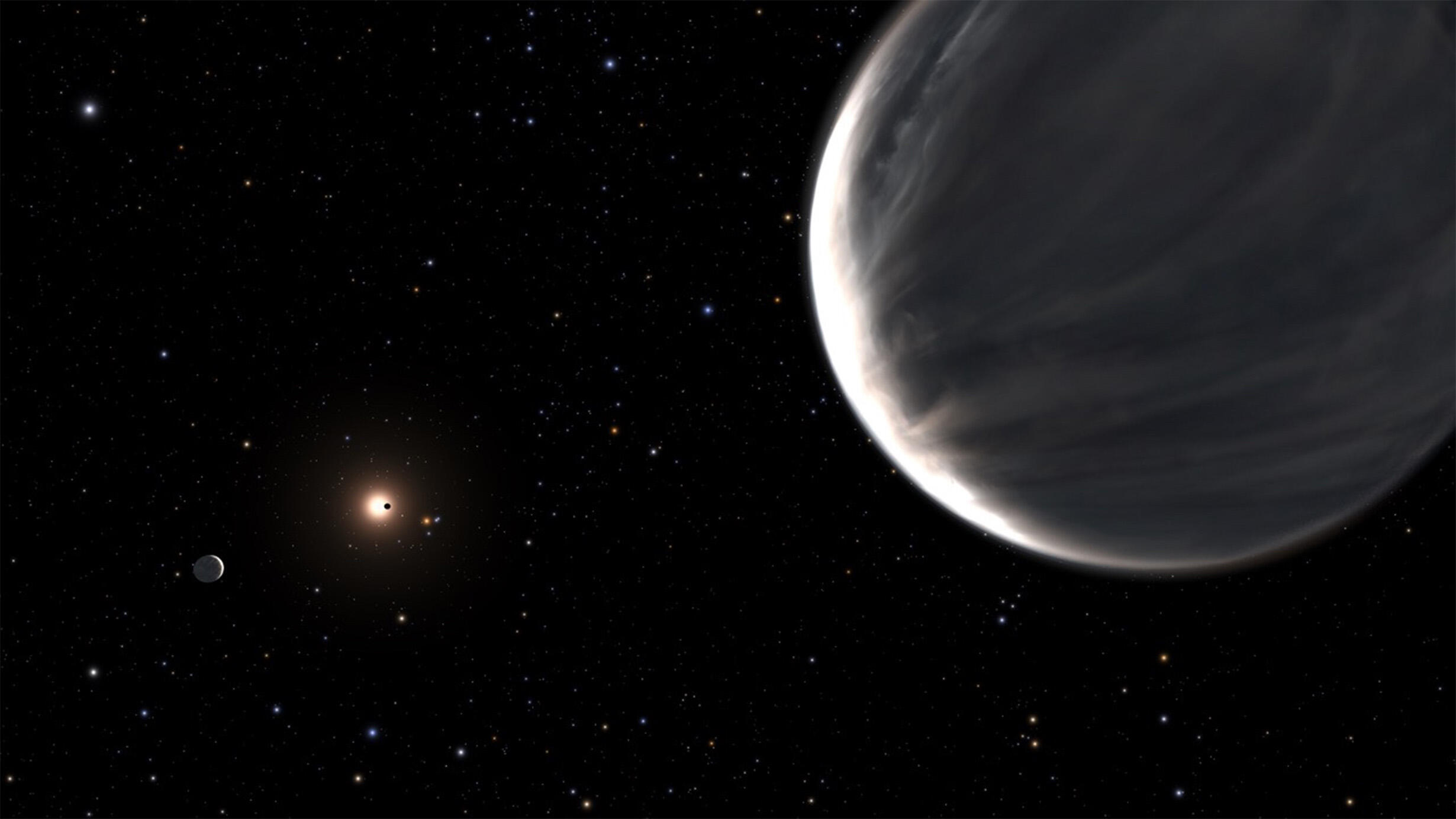 Artistic representation of the Kepler-138 system with Kepler-138 d in the foreground, Kepler-138 c closer to the star, Kepler-138 b transiting in front of the star, and Kepler-138 e not visible.
Artistic representation of the Kepler-138 system with Kepler-138 d in the foreground, Kepler-138 c closer to the star, Kepler-138 b transiting in front of the star, and Kepler-138 e not visible.© Space Telescope Science Institute
A team of astronomers has found evidence that two exoplanets in a previously discovered planetary system 218 light years away from Earth are “water worlds.”
“The discovery of these twin ‘water worlds’ shows that small planets, the kind thought most capable of hosting life, can have a range of different compositions—they are not all rocky worlds,” said Ruth Angus, Museum Assistant Curator of Astrophysics, who is part of the team that led the study, led by the University of Montreal and published today in the journal Nature Astronomy.
The worlds, which orbit a red dwarf star in the constellation Lyra, are unlike any planets found in our own solar neighborhood. They are part of a planetary system known as Kepler-138, the discovery of which was announced in 2014 based on data from NASA’s Kepler Space Telescope. At the time, there were three known planets in the system, named Kepler-138 b, c, and d, and researchers started making more observations of the planets using the Hubble and Spitzer space telescopes.
In addition to finding a fourth planet in the system, Kepler-138e, the research team found something else surprising: Kepler-138c and d are probably composed mainly of water.
Water wasn’t directly detected in this study, but the researchers found that the planets c and d have volumes more than three times that of Earth and masses twice as big, yet much lower densities than Earth. This is unusual because most of the planets just slightly bigger than Earth that have been studied in detail seem to be rocky worlds like ours.
The researchers suggest that up to half of the volume of planets c and d should be made of materials that are lighter than rock but heavier than hydrogen or helium. The most common of these candidate materials? Water.
“We previously thought that planets that were a bit larger than Earth were big balls of metal and rock, like scaled-up versions of Earth, and that’s why we called them super-Earths,” said Björn Benneke, a professor at the University of Montreal and an author of the study. “However, we have now shown that these two planets, Kepler-138c and d, are quite different in nature: a big fraction of their entire volume is likely composed of water. It is the best evidence yet for water worlds, a type of planet that was theorized by astronomers to exist for a long time.”
© Benoit Gougeon, University of Montreal
Researchers caution that the planets may not have surface oceans like those on Earth. The closest comparison to the two planets would be some of the icy moons in the outer solar system that are largely composed of water surrounding a rocky core. They raise intriguing questions for future investigations.
“We know that life on Earth needs water to survive, so water worlds are promising targets for detecting life on other planets,” said Angus. “These planets are considerably warmer than Earth, however: Kepler-138d has an average temperature of almost 80 degrees Celsius, or around 170 Fahrenheit, and Kepler-138c is even hotter.”
The researchers also found that the two water worlds are “twin” planets, with virtually the same size and mass, while they were previously thought to be drastically different. The planet that orbits closer to the star, Kepler-138b, on the other hand, is confirmed to be a small Mars-mass planet, one of the smallest exoplanets known to date.